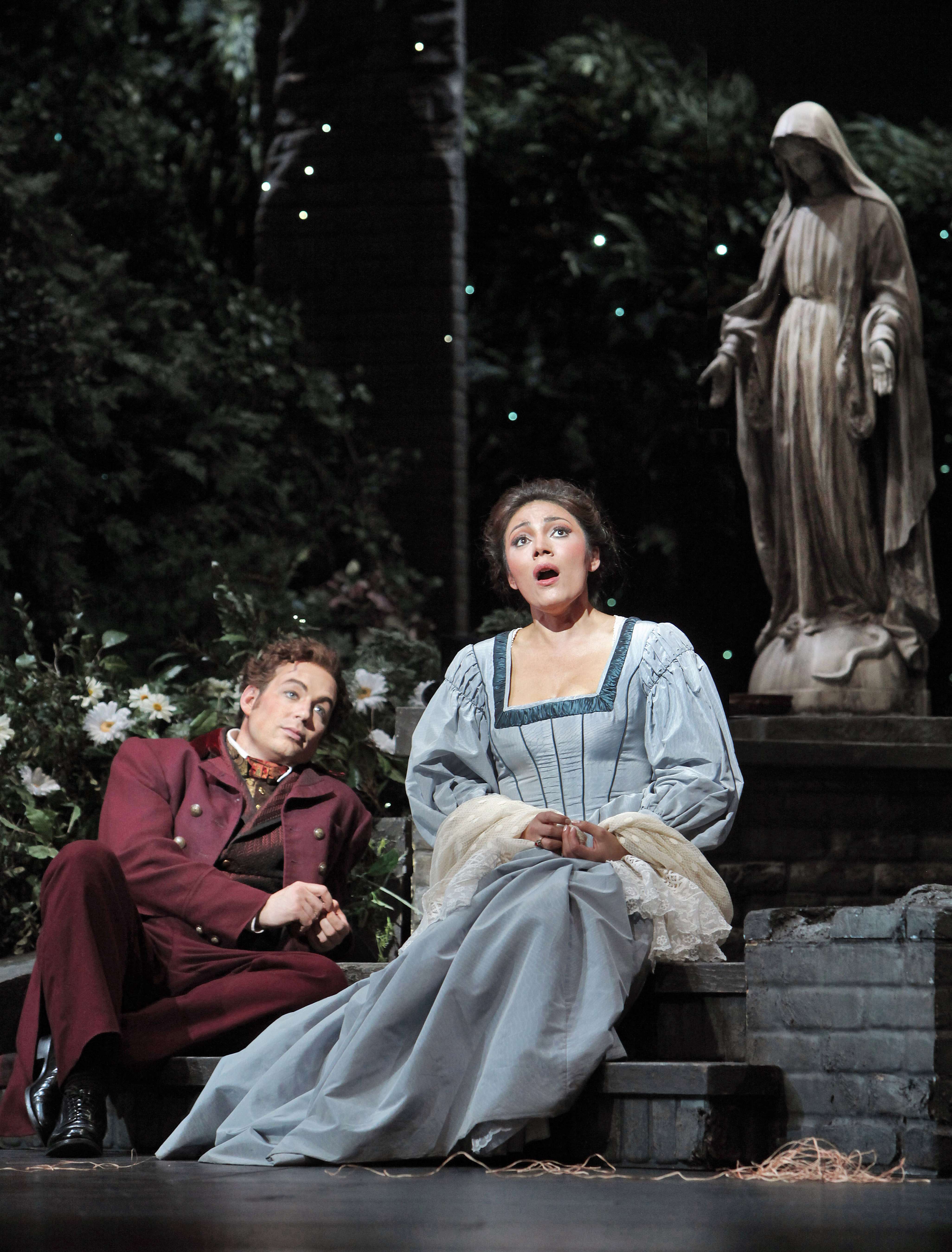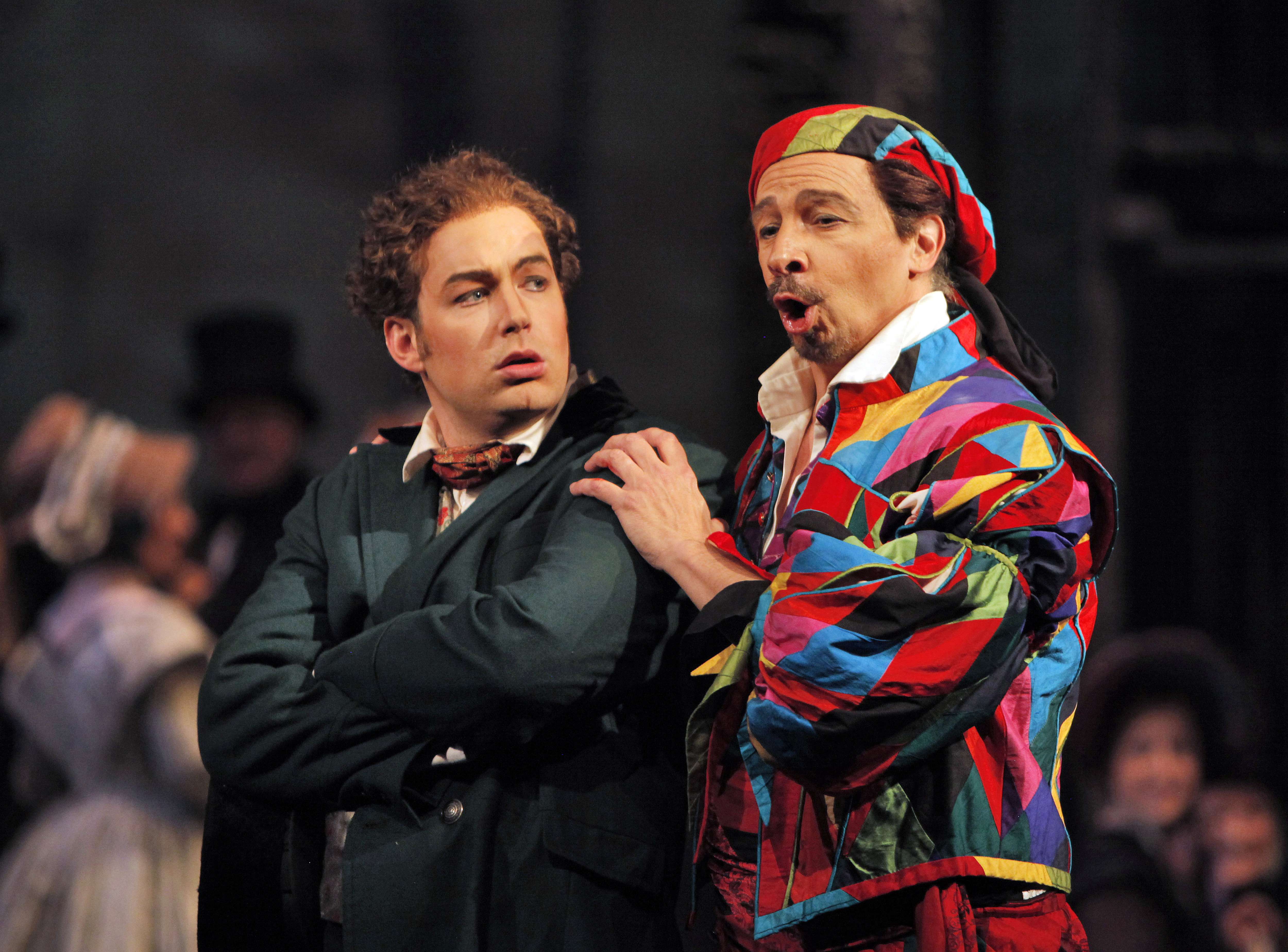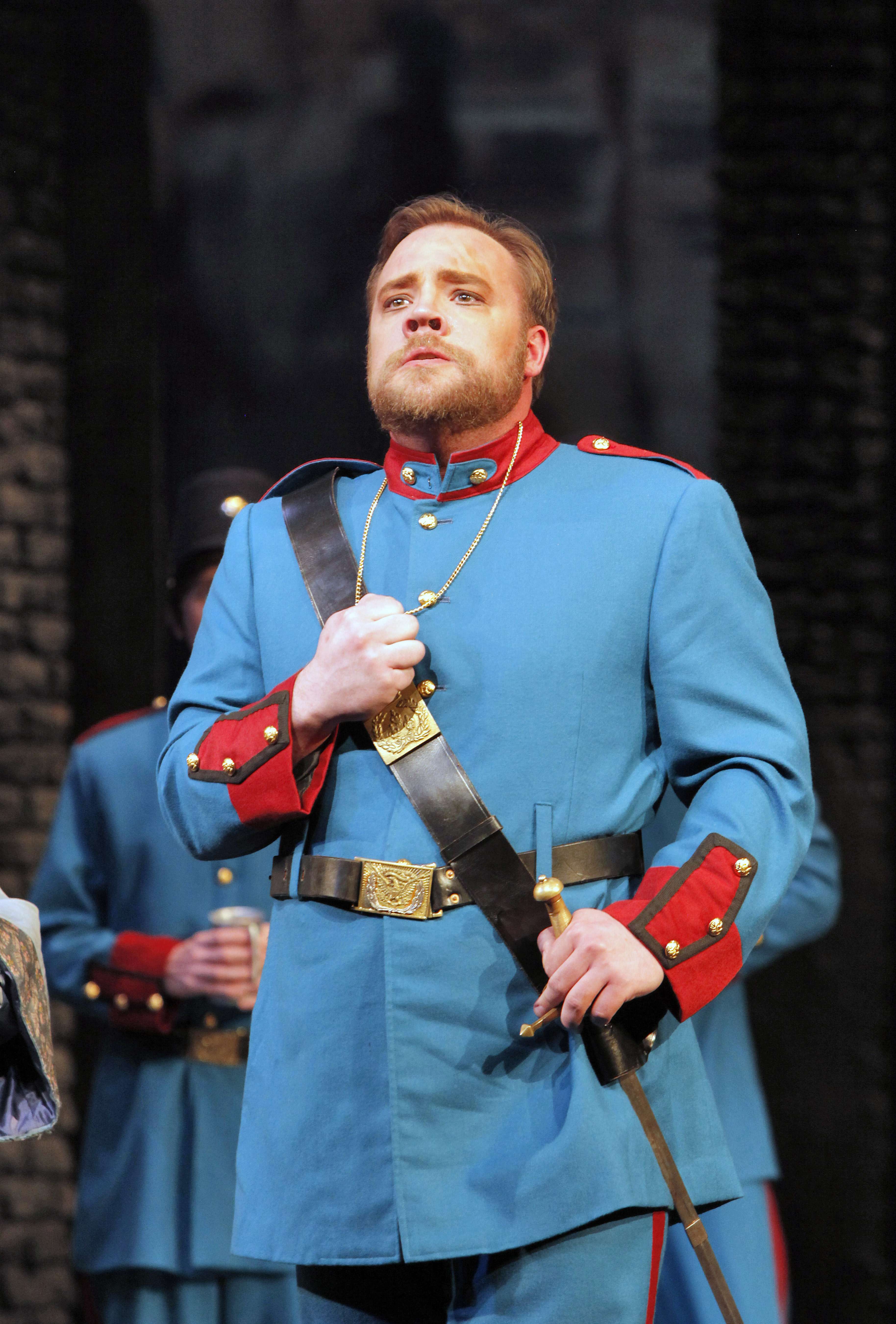|
Back
Final Resilience and Redemptive Qualities San Diego
Civic Theater
04/23/2011 - and April 26, 29, May 1, 2011
Charles Gounod: Faust
Stephen Costello (Faust), Ailyn Pérez (Marguerite), Greer Grimsley (Méphistophélès), Brian Mulligan (Valentin), Sarah Castle (Siébel), Jane Bunnell (Marthe Schwerlein), Scott Sikon (Wagner)
San Diego Opera Chorus, Walter Huff (Acting Chorus Master), San Diego Opera Orchestra, Jeff Thayer (Concertmaster), Karen Keltner (Conductor)
David Gately (Director), Robert Perdziola (Scenic and Costume Designer), Michael Whitfield (Lighting Designer), Steven W. Bryant (Wig and Makeup Designer), Javier Velasco (Choreographer), Dale Anthony Girard (Fight Director)

(© Cory Weaver)
San Diego Opera’s opening of Faust is divinely wedged in between Good Friday and Easter Sunday, making it an appropriate operatic spiritual awakening in 2011. Loosely based on a chapter from Goethe’s Faust, Charles Gounod’s gorgeous music was penned against the masterful co-librettists of Jules Barbier and Michel Carré. Faust, having undergone a series of revisions since its premiere at the Théâtre Lyrique on March 19, 1859, thus allows a plentitude of options production-wise in content and sequential context.
Gounod’s Faust traditionally stands as a five act opera (when revision was made for the Grand Opéra incorporating ballet); however, San Diego Opera chooses to condense this into three acts, including four scenes (the mill, the church, the street and the prison) within Act III, thereby eliminating the Nuit de Walpurgis while inserting “The Spinning Scene” and Siébel’s "Si le bonheur à sourire t’invite."
This production (personally seen in Chicago 2003) originating from the Lyric Opera, shows a bit of age, but remains visually rich and traditional (i.e. religious icons, a crucified Christ, the pulpit.) Interspersed are a tad kitschy (i.e. garden scene) elements, but all comes to life when backdrop textures are captured in Michael Whitfield’s lighting ranging from hellish reds to demurred virginal whites.
Karen Keltner does an exceptional job in conducting the score from beginning to end. Upon hearing the first fortissimo F notes in the introduction/prélude, it’s a sure bet the orchestra sets a musically firm foundation for the remainder of the opera. Forever adept of her surroundings, Ms. Keltner takes the cue by pushing the tempo to a more acceptable cadence after the opening, continuing with satisfying pace throughout the balance of the opera.

(© Cory Weaver)
David Gately, altogether, lands a rather solid cast despite the pocketed hole. Returning Stephen Costello is a moderately convincing, rigid Faust, dressed in Robert Perdziola’s frumpy burgundy suit, who vocally begins with illustrious brilliance in Act I. He soon loses steam in Act II, evidenced by two sections of flat notes, coupled by shortened phrases, and appearing distantly exhausted. Somehow, he pulls himself together to attain operatic redemption in Act III (the prison.)
Renunciation, redemption, resurrection is a readied recapitulation of Marguerite’s plight. On an opposite path, Ailyn Pérez, a soprano with a degreed smoky heft, is reserved and exercises restraint with a tinged prosaic vein in “Ô Dieu ! Que de bijoux !” (“The Jewel Song”) that comes across dull. Where Ms. Pérez shines, however, is in the remainder of the opera, gathering magnified momentum during “The Spinning Scene”, followed by Méphistophélès’ traumatized taunts in the church scene and finally during the closing trio. The latter is where she shines: she’s redeemed, following Faustian guidelines.

(© Cory Weaver)
Greer Grimsley is an impish understated Méphistophélès, complete with a boon of undiminished bass devilishness while delivering an electrified “Le veau d’or” (“Song of the Golden Calf”) and a spectacled mocking “Vous qui faites l’endormie” in Act III, Scene III. In the ensuing section, Brian Mulligan fills in as the polished loyalist Valentin, a last minute placement for the indisposed Joshua Hopkins. Having recently sung the role at San Francisco Opera, Mulligan brings a pronounced verve of brotherly ire during his rant over Marguerite’s despicable transgressions followed by a most convincing sword fight with Faust, incisively choreographed by Dale Anthony Girard.

(© Cory Weaver)
New Zealand mezzo soprano Sarah Castle is a sprite light-hearted Siébel. Rounding out the edges of a sullen and heady score, both Jane Bunnel’s Marthe Schwerlein and Wagner, played by Scott Sikon, add a distinctive fun-loving punch as supportive cast members.
Walter Huff’s San Diego Opera Chorus takes powerful charge with a fervent mix of voices, especially effective during the offstage interludes of Act I and the finale in Act III, adding a convincing blend of religious ethereality. The ever popular and tuneful “Gloire immortelle” is polished, dignified and precise.
Robert Perdziola’s costuming is a bit vieux jeu and tiresomely Victorian. It does, however, resonate with the scenic fixturing. Javier Velasco’s uneventful choreography is non controversial, yet unimaginative. In keeping with a decorum of period appropriate vestiture, there exists a sliver of incongruity during “Ainsi que la brise légère” (“The Waltz”) with static townspeople (albeit a crude tustle between two women) surrounding a trio of quasi ballet dancers that, choreographically speaking, is redundantly bland.
If Easter’s any gauge of resurrection qualities, this Faust has redeeming qualities and is still an enjoyable night at the opera.
Christie Grimstad
|